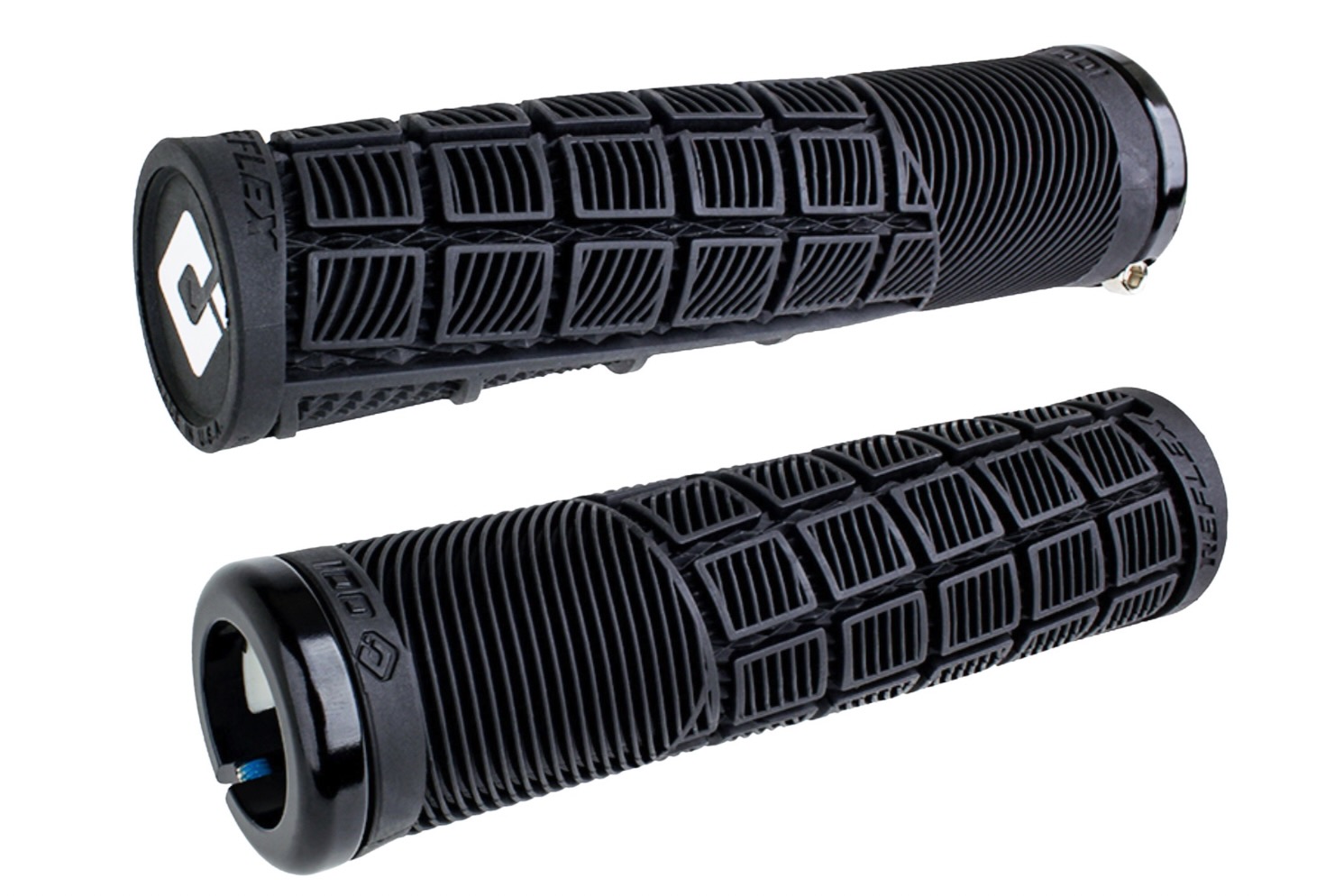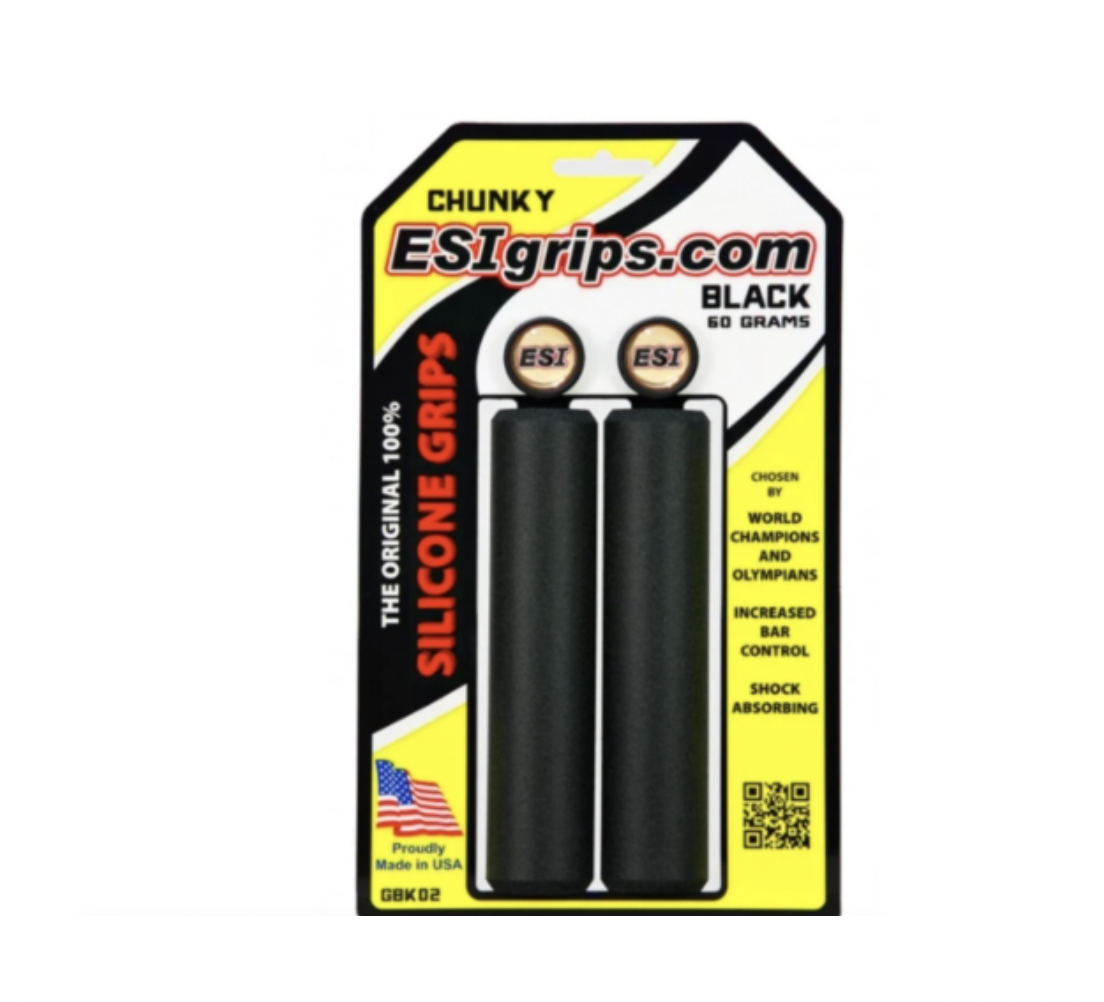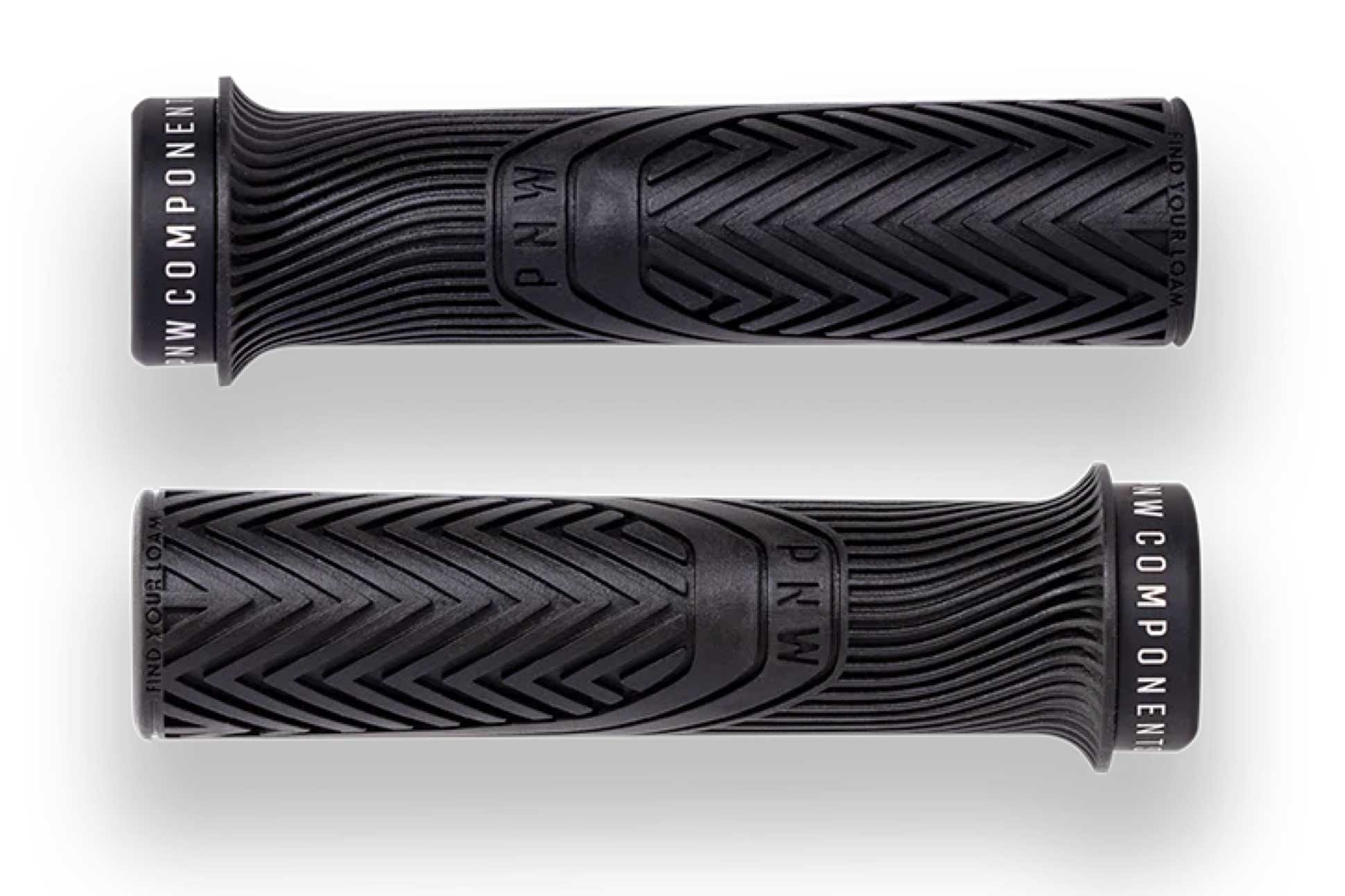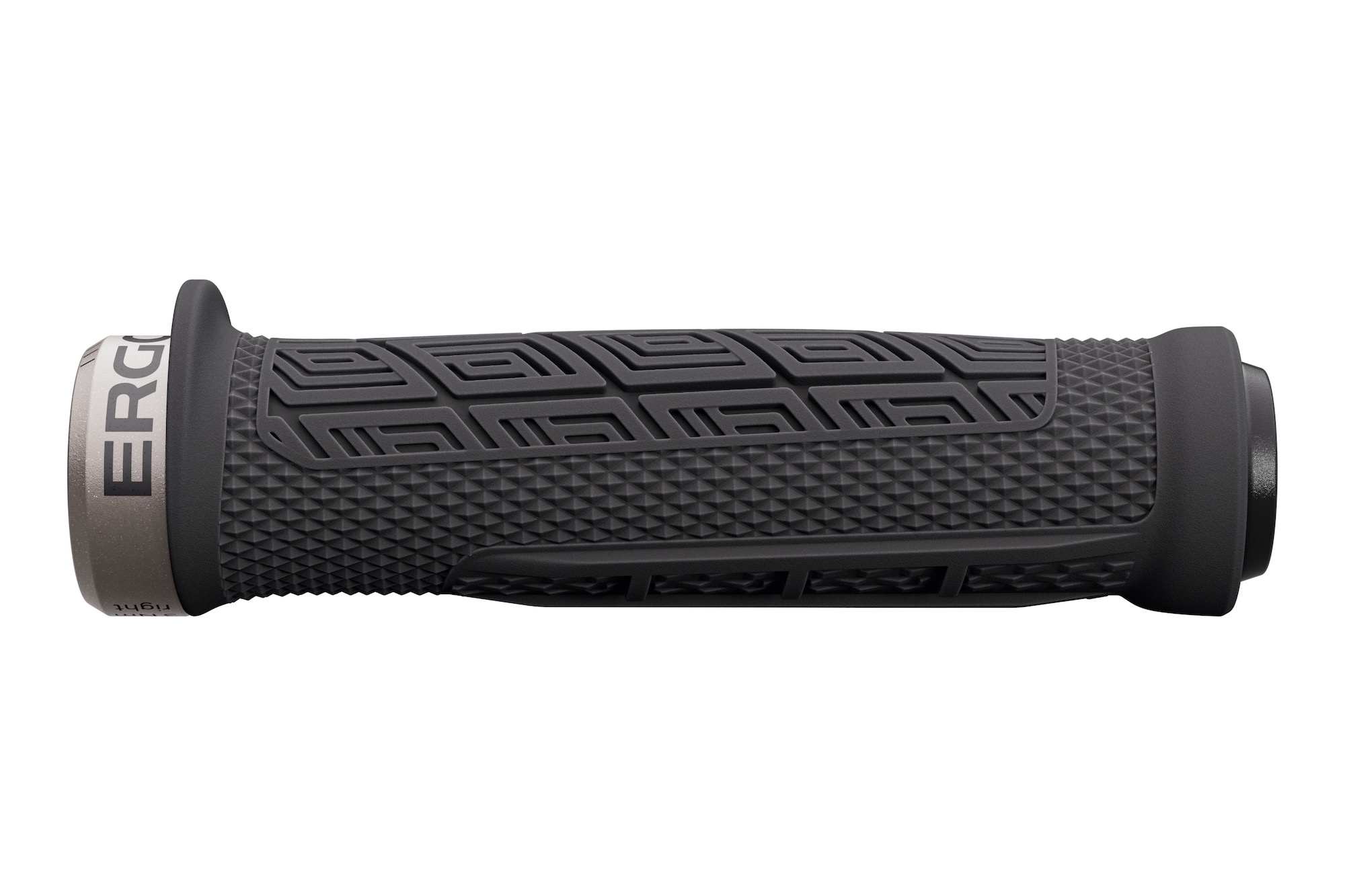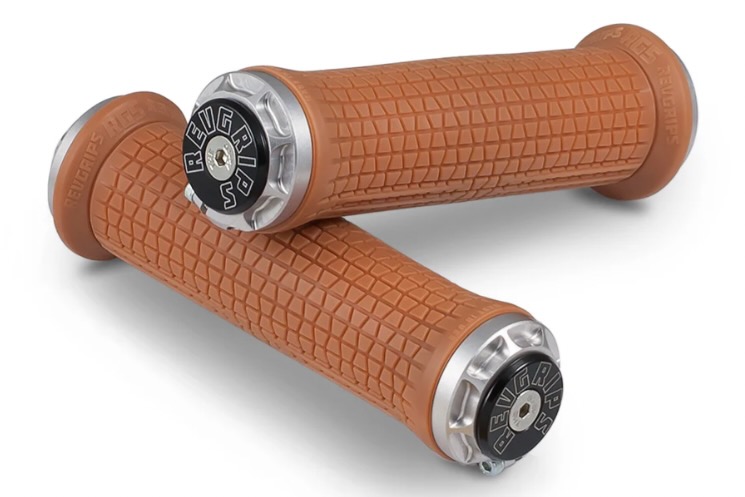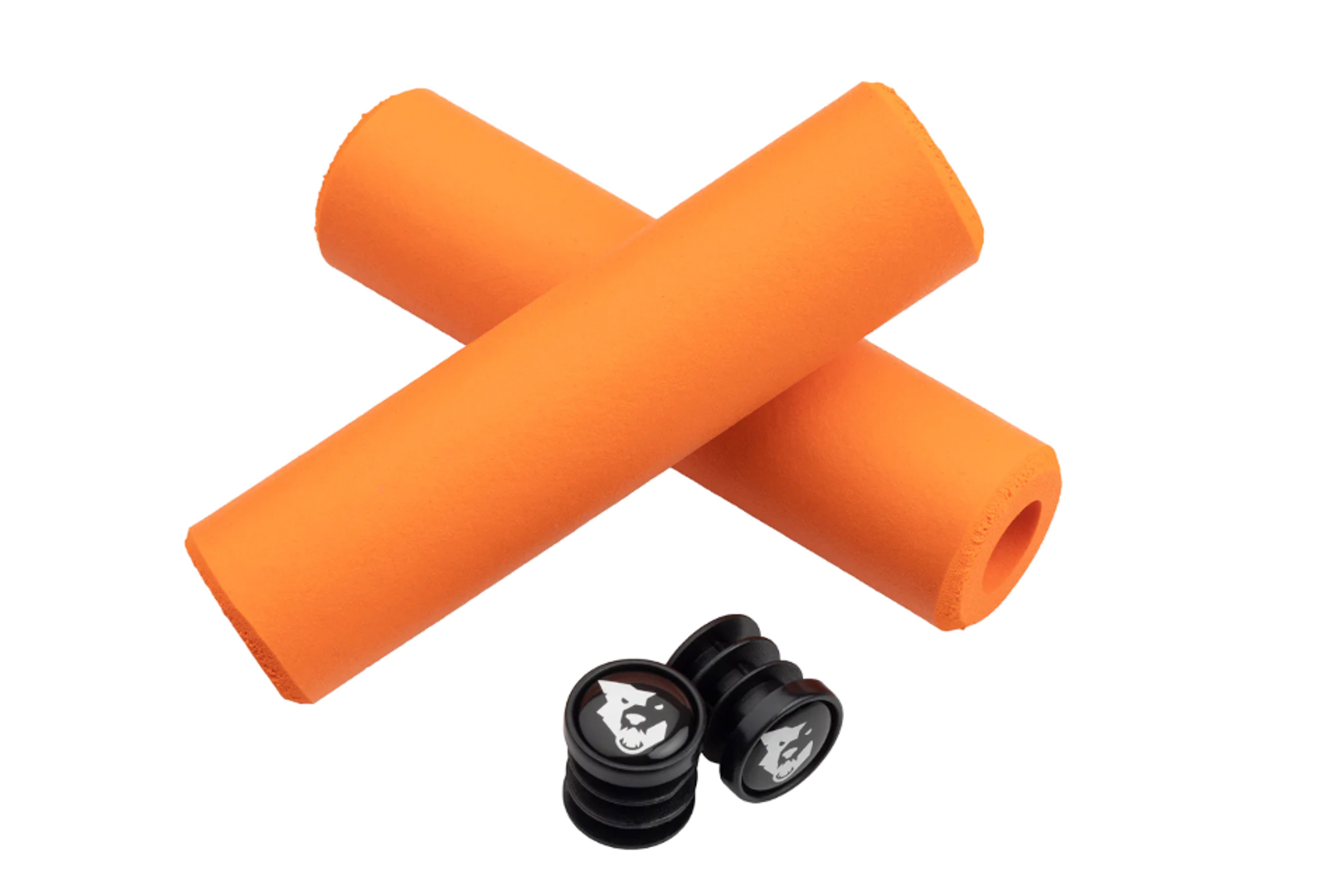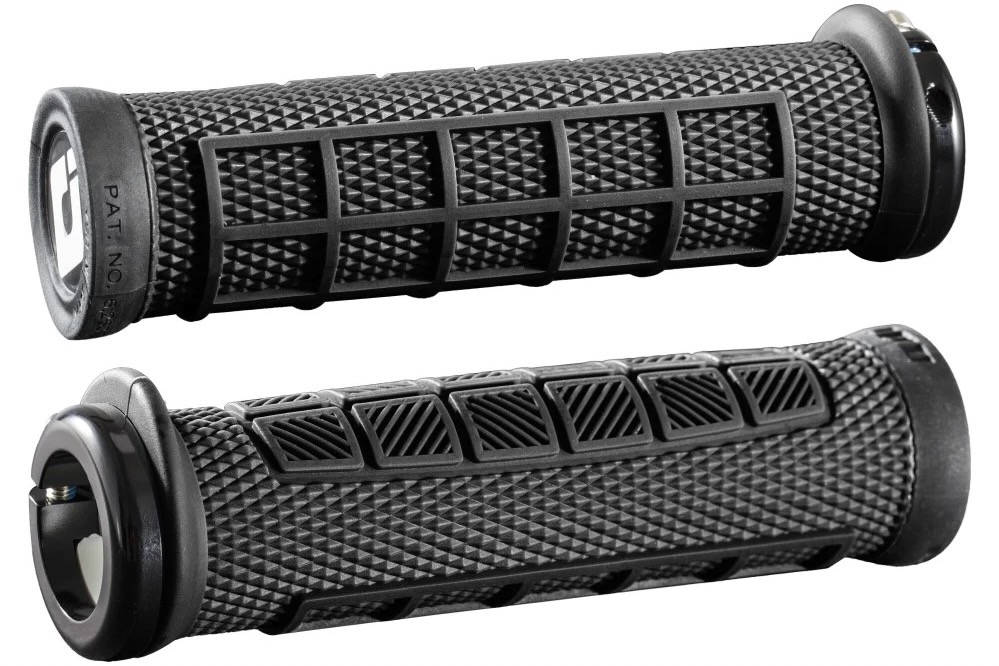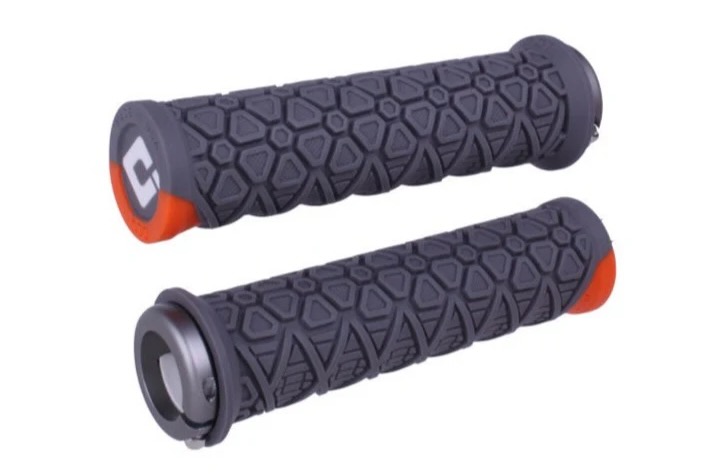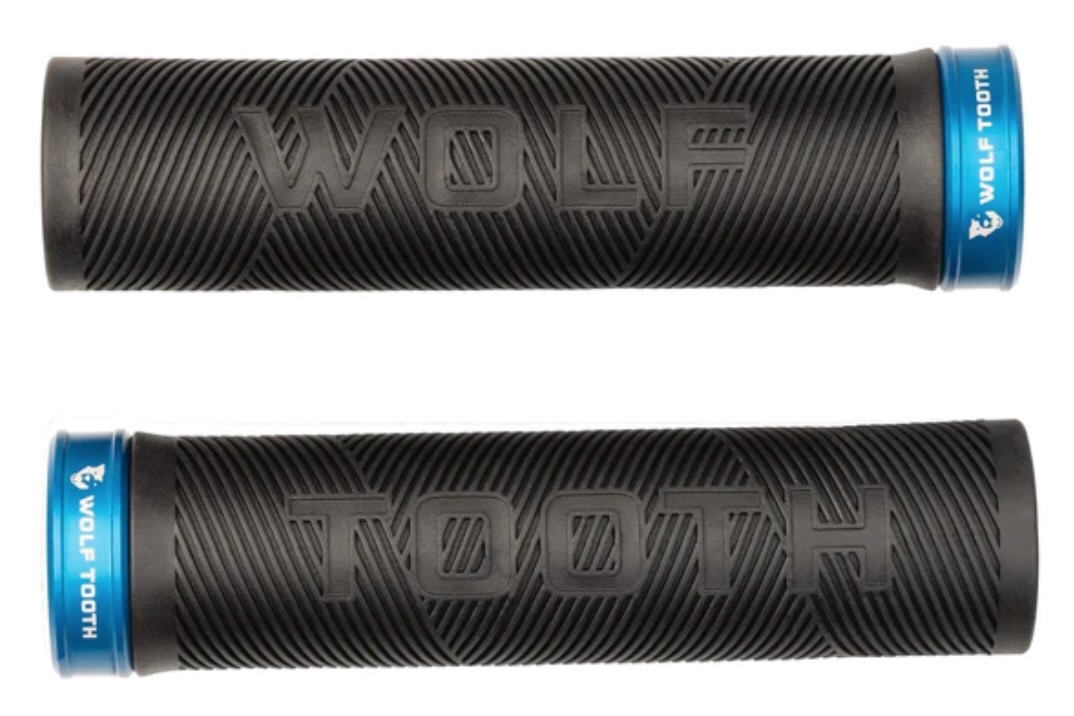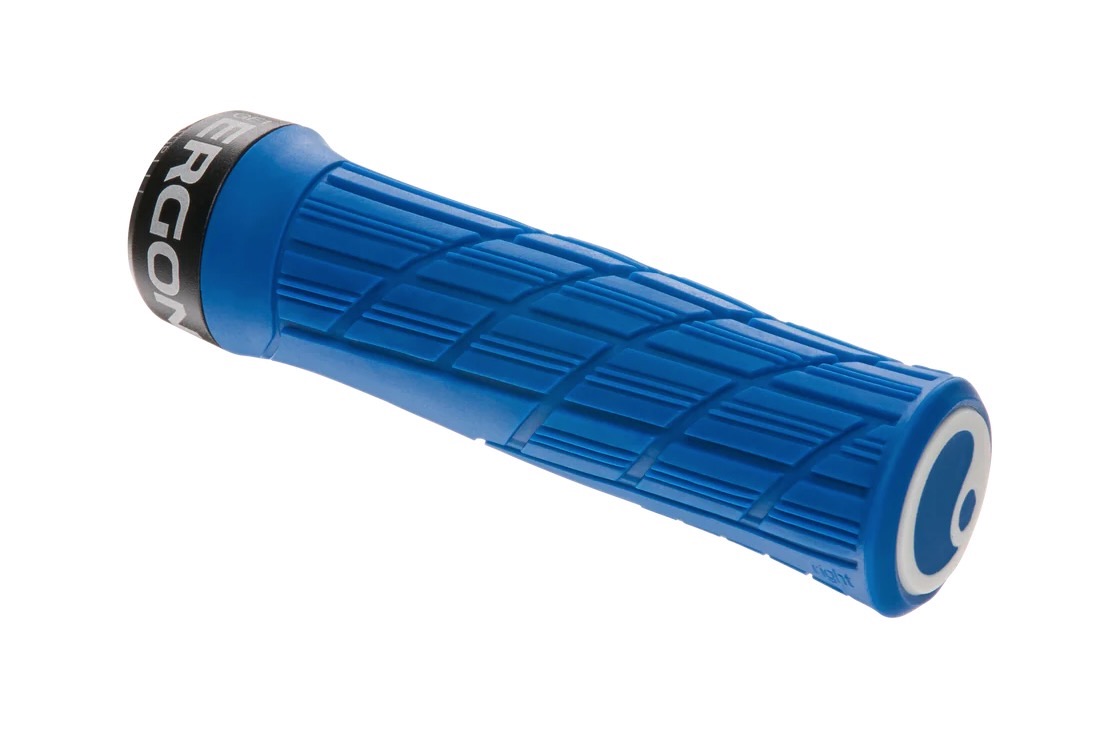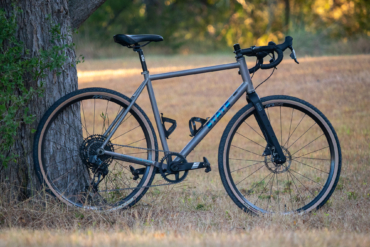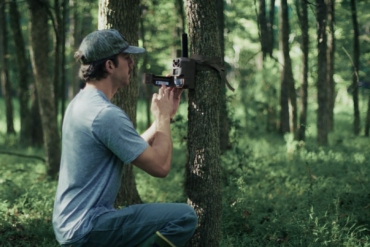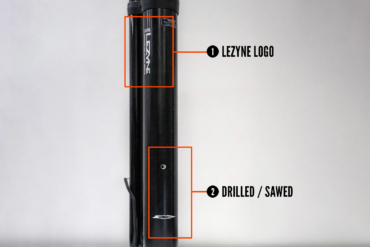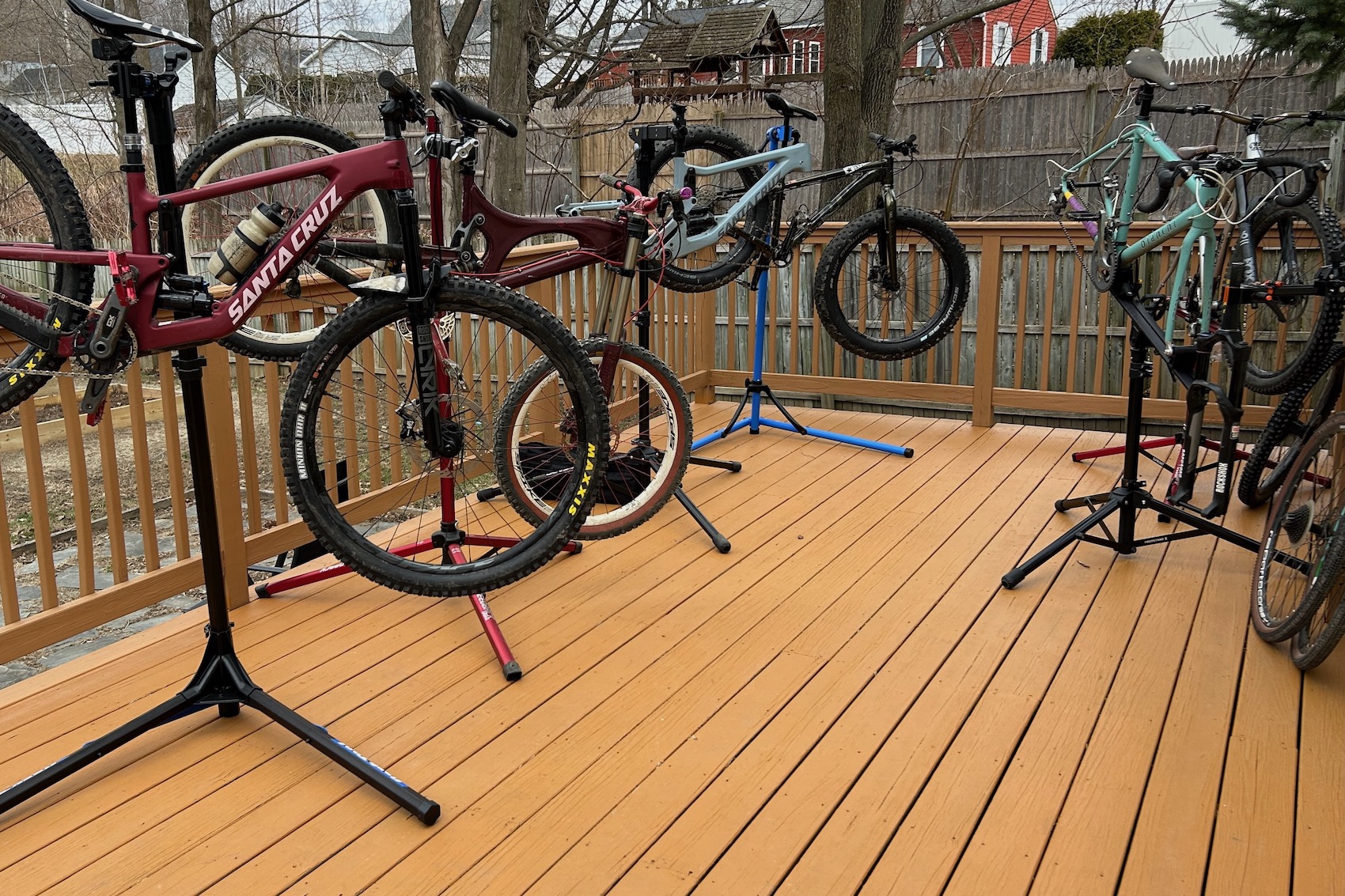Your mountain bike grips are one of only three contact points between you and your bike and are important for comfort and control. For such a seemingly simple component, the right grips can improve your comfort with the right fit, cushioning, and ergonomics while ensuring you maintain your grip through whatever comes down the trail.
Compared to most other mountain bike-related upgrades, grips are among the most affordable, so it’s easy to freshen up the look and feel of your ride. But with so many options to choose from, finding the right pair to suit your riding style and preferences can be a challenge. Different diameters, materials, cushioning levels, patterns, and attachment styles can all play a role in the mountain bike grips that are best for you.
Our team of testers has decades of riding experience and has tried nearly every mountain bike grip on the market. We tested the models included here for months — in some cases years — to come up with this curated list. So, whether you’re after a gravity-oriented grip like the Ergon GDH Team, a lightweight slide-on like the ESI Chunky, or something in between, we’ve got recommendations to steer you toward the best.
Editor’s Note: We updated our mountain bike grips guide for bike season on May 7, 2025, with the addition of three new models, including the unique Rev Grips Pro Series Ergonomic, the top-rated ODI Reflex, and the ODI Vanquish.
The Best Mountain Bike Grips of 2025
ODI Reflex
- Length: 135 mm
- Diameter: 33.5 mm (regular), 34.5 mm (XL)
- Style: Lock-on, single clamp
- Weight: 106 g/pair
- Cushion: Moderate
Pros
- Excellent traction
- Pattern balances cushion and grip very well
- Available in 2 diameters
- Lots of colors options
- Fair price
Cons
- Regular size may be too large for small hands
ESI Chunky
- Length: 120 mm
- Diameter: 32 mm
- Style: Slide-on
- Weight: 60 g/pair
- Cushion: Moderate
Pros
- Lightweight
- Affordable
- Cushy grip
Cons
- More difficult to install and remove
- Can be damaged more easily than rubber grips
PNW Components Loam Grips
- Length: 133.5 mm
- Diameter: 30 mm, Loam XL: 34 mm
- Style: Lock-on, single clamp
- Weight: 90 g/pair, Loam XL: 120 g/pair
- Cushion: Light, low profile
Pros
- Good moisture regulation
- Vibration damping
- Lots of color options
- Affordable
Cons
- Stiffer than other grips on this list
- Light colors get pretty dirty looking
Ergon GDH Team
- Length: 135 mm
- Diameter: Variable: 29.5 – 32 – 29.5 mm
- Style: Locking, single clamp
- Weight: 115 g/pair
- Cushion: Moderate
Pros
- Super grippy
- Great middle of the road cushion
- All-around great design
Cons
- Kinda expensive
- Only come in black
Rev Grips Pro Series Ergonomic
- Length: 120 mm (usable grip length)
- Diameter: 4 options: 32, 33, 34, and 35 mm
- Style: lock-on, dual clamp
- Weight: 138 g/pair
- Cushion: Firm, but “suspension” built into the grip
Pros
- “Suspension” for the hands
- Notable improvement in hand/wrist comfort, Grip movement is not noticeable while riding
- Multiple thickness options
- Lots of color choice
Cons
- Heavier weight
- More involved installation
- Expensive
Wolf Tooth Components Fat Paw
- Length: 135 mm
- Diameter: 36 mm
- Style: Slide-on
- Weight: 110 g
- Cushion: Thick
Pros
- Great cushioning
- Myriad of color options
Cons
- Difficult to install
- Some control tradeoff for comfort
Race Face Half Nelson Grip
- Length: 130 mm
- Diameter: 29 mm
- Style: Lock-on, single clamp
- Weight: 92 g/pair
- Cushion: Firm, low profile
Pros
- Sticky grip
- Moisture channels
- Precise silhouette
- Perfect for those with small hands or prefer thinner grips
Cons
- Softer rubber sacrifices long-term durability
- Limited cushioning
Other Mountain Bike Grips To Grab Onto
- Length: 130 mm
- Diameter: 32 mm
- Style: Lock-on, single clamp
- Weight: 100 g/pair
- Cushion: Moderate
Pros
- Reasonable price
- Well-balanced cushion and grip
- Durable
- Work well for any style of riding
- Moderate diameter should work for most riders
Cons
- None
- Length: 135 mm
- Diameter: 32.75 mm
- Style: Lock-on, single clamp
- Weight: 116 g/pair
- Cushion: Medium to soft, D30 material
Pros
- Super grippy pattern and material
- Improved vibration damping with looser grip
- Innovative use of D30 material
- Medium diameter should work for most people
Cons
- Single diameter may not work everyone
- 2x damping claim seems dubious
- Moderately expensive
- Length: 132 mm
- Diameter: 32 mm
- Style: Lock-on, single clamp
- Weight: 106 g/pair
- Cushion: Moderate
Pros
- Perfect level of cushioning
- Great grip
- Choose you lock ring color
- Moderate price point
Cons
- Stock plastic end caps are prone to damage
- Length: 130 mm
- Width: 30 mm
- Style: Slide-on
- Weight: 48 g per pair
- Cushion: Light, low profile
Pros
- Affordable
- Very grippy
- Slimmer profile for dropping grams
- Nice option for smaller hands
Cons
- Thin
- Can make hands sweaty
- Not the best choice for larger hands
- If you need thicker grips, look at the ESI Chunky
- Length: 135 mm
- Diameter: 32 mm
- Style: Locking, single clmap
- Weight: 119 g/pair
- Cushion: Moderate
Pros
- Good ergonomics
- Available in lots of colors
- Great grip
Cons
- Not the lightest
- Length: 136 mm
- Width: 30 mm (size small), 32 mm (size large) plus the mini-wing
- Style: Lock-on, single clamp
- Weight: 115 g/pair
- Cushion: Moderate
Pros
- Added wrist support
- Sun-resistant
- Great choice for folks with smaller hands
Cons
- Unique shape not for everyone
Mountain Bike Grips Comparison Chart
| Mountain Bike Grip | MSRP | Length | Diameter | Style | Weight | Cushion |
|---|---|---|---|---|---|---|
| ODI Reflex | $31 | 135 mm | 33.5 mm, 34.5 mm (XL) | Lock-on | 106 g/pair | Moderate |
| ESI Chunky | $20 | 120 mm | 32 mm | Slide-on | 60 g/pair | Moderate |
| PNW Components Loam Grips | $29 | 133.5 mm | 30mm, 34 mm (XL) | Lock-on | 90 – 120 g/pair | Moderate |
| Ergon GDH Team | $40 | 135 mm | 29.5 – 32 – 29.5 mm | Lock-on | 115 g/pair | Moderate |
| Rev Grips Pro Series Ergonomic | $90 | 120 mm (grip only) | 32, 33, 34, and 35 mm | Lock-on | 138 g/pair | Firm |
| Wolf Tooth Fat Paw | $27 | 135 mm | 36 mm | Slide-on | 110 g/pair | Thick |
| Race Face Half Nelson Grip | $27 | 133 mm | 29 mm | Lock-on | 92 g/pair | Firm, low profile |
| ODI Elite-Pro | $30 | 135 mm | 32 mm | Lock-on | 100 g/pair | Moderate |
| ODI Vanquish | $45 | 135 mm | 32.75 mm | Lock-on | 116 g/pair | Moderate to Soft |
| Wolf Tooth Echo Lock-On | $32 | 132 mm | 32 mm | Lock-on | 106 g/pair | Moderate |
| ESI Grips Racer’s Edge | $19 | 130 mm | 30 mm | Slide-on | 48 g/pair | Light, low profile |
| Ergon GE1 Evo | $35 | 135 mm | 32 mm | Lock-on | 119 g/pair | Moderate |
| Ergon GA3 | $35 | 136 mm | 30 / 32 mm | Lock-on | 115 g/pair | Moderate |
How We Tested the Best Mountain Bike Grips
At GearJunkie, we’re always seeking the best products to enhance our comfort, control, and enjoyment while riding our mountain bikes. Over the years, we’ve learned that choosing the right set of mountain bike grips is a great, affordable way to freshen up our bike’s cockpit and dial it into our specific needs. Our team also just loves testing out and reviewing new gear to provide our readers with honest feedback and recommendations to help them choose the best products for their needs.
The GearJunkie staff is composed of trail hogs who love to crank out long days in the saddle. Our lead tester of mountain bike grips is Jeremy Benson. Benson is an editor at GearJunkie, and he’s been mountain biking for 3 decades and professionally testing and reviewing mountain bikes and related accessories for the past 8 years.
He spends an inordinate amount of time in the saddle while training for races, testing bikes, accessories, and apparel, or riding just for fun and fitness. He’s used well over 30 different mountain bike grips in his search for the perfect fit and often gets to try different models when testing complete mountain bikes. As a person who hates hand numbness, arm pump, and the lack of control that goes along with it, he is very particular about the grips he chooses for his personal bikes.
Contributing authors Morgan Tilton and Matthew Medendorp also provided feedback for this guide. Both are experienced mountain bikers who put in big miles and have been testing and reviewing outdoor gear for many years. Their riding and testing experience makes them both particularly adept at scrutinizing the gear they use.
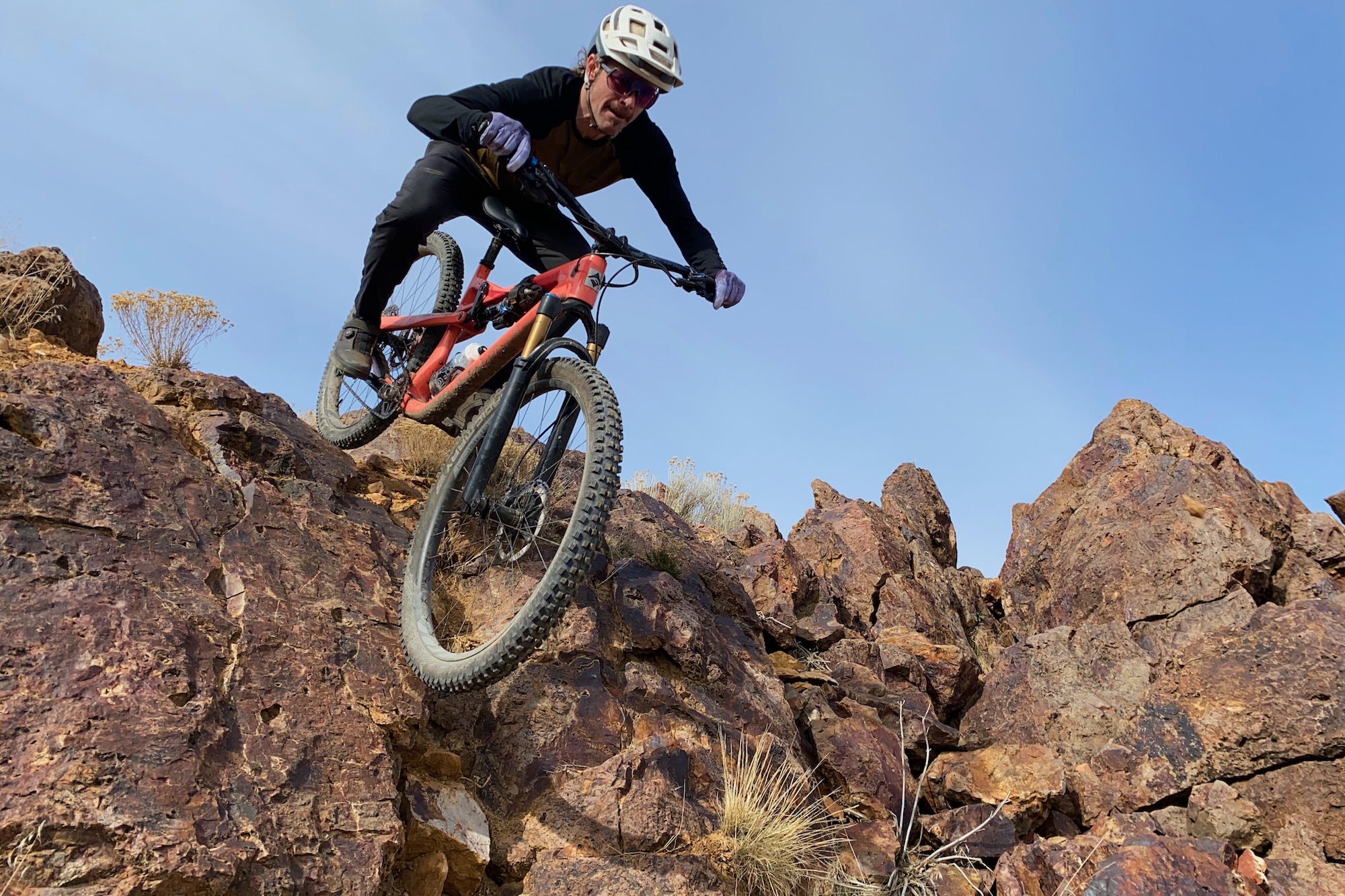
In considering which grips to test, we surveyed our trail partners, scoped out parking lots, and handled a lot of handlebars to get a feel for how each grip fits into the market. Then, we put in the work climbing, descending, and mashing about on our bikes to test the durability, texture, and feel of each grip.
In order to find the best mountain bike grips available today, we mounted every grip we could get our paws on and hit the trails to test the cushioning, control, and robustness of each. From shuttle runs to cross-country races, each set of grips in this guide has been tested for at least a month. Others have been in use for over a year, and some we keep going back to year after year because they are great.
The mountain biking market constantly changes, and our testing follows that trend. As new mountain bike grips hit the market, rest assured that we’re putting them to the test and will update our guide accordingly.
Buyer’s Guide: How to Choose Mountain Bike Grips
For such a simple component, choosing the right mountain bike grips can be more difficult than you might expect. There are quite a few factors to consider, which we’ll explain below. And if you’re among the many who suffer from hand or wrist discomfort or numbness while riding, you may find some helpful information in our article specific to mountain bike grips for sore hands.
Slide-On vs. Lock-On Grips
Mountain bike grips fall into two general categories based on how they attach to the handlebar.
Lock-on grips
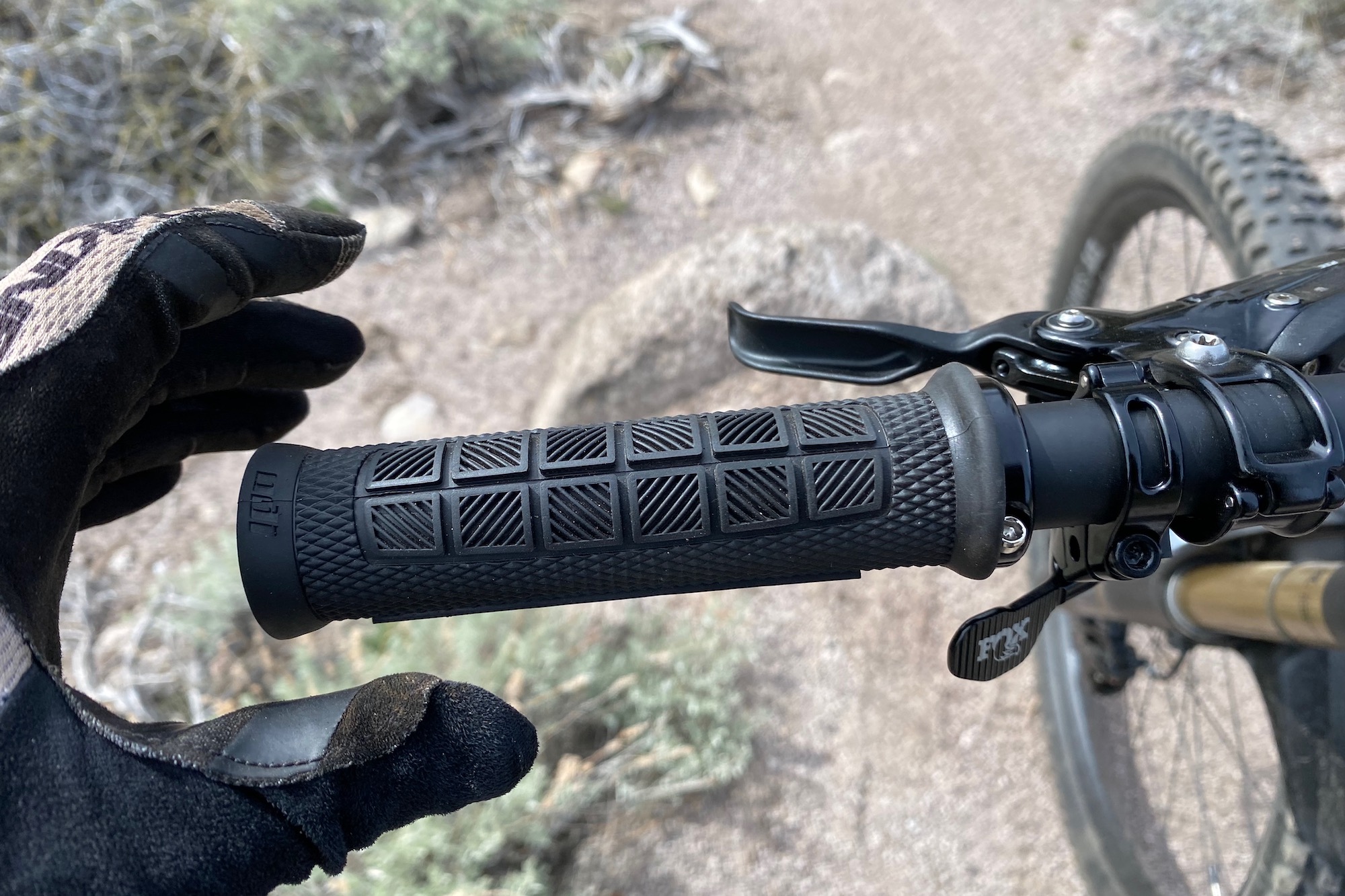
As the name suggests, lock-on grips secure on handlebars with a locking collar — a metal ring-shaped clamp on one or both ends of the handlebars with a bolt, which locks them in place and prevents them from sliding or rotating. These typically have a rigid plastic interior sleeve covered by a rubber compound outer.
This design also allows the diameter of the inside of the grips to be a bit wider than the diameter of the handlebar, so it is easy to install, remove, and adjust. This contrasts with a slide-on grip, which has a smaller interior diameter than the handlebar and uses friction to keep the grips in place.
Lock-on grips are easier to install and are generally more secure. However, they’re also heavier and tend to be more expensive than slide-on grips, as they have a rigid tube core and metal collars.
Slide-On Grips
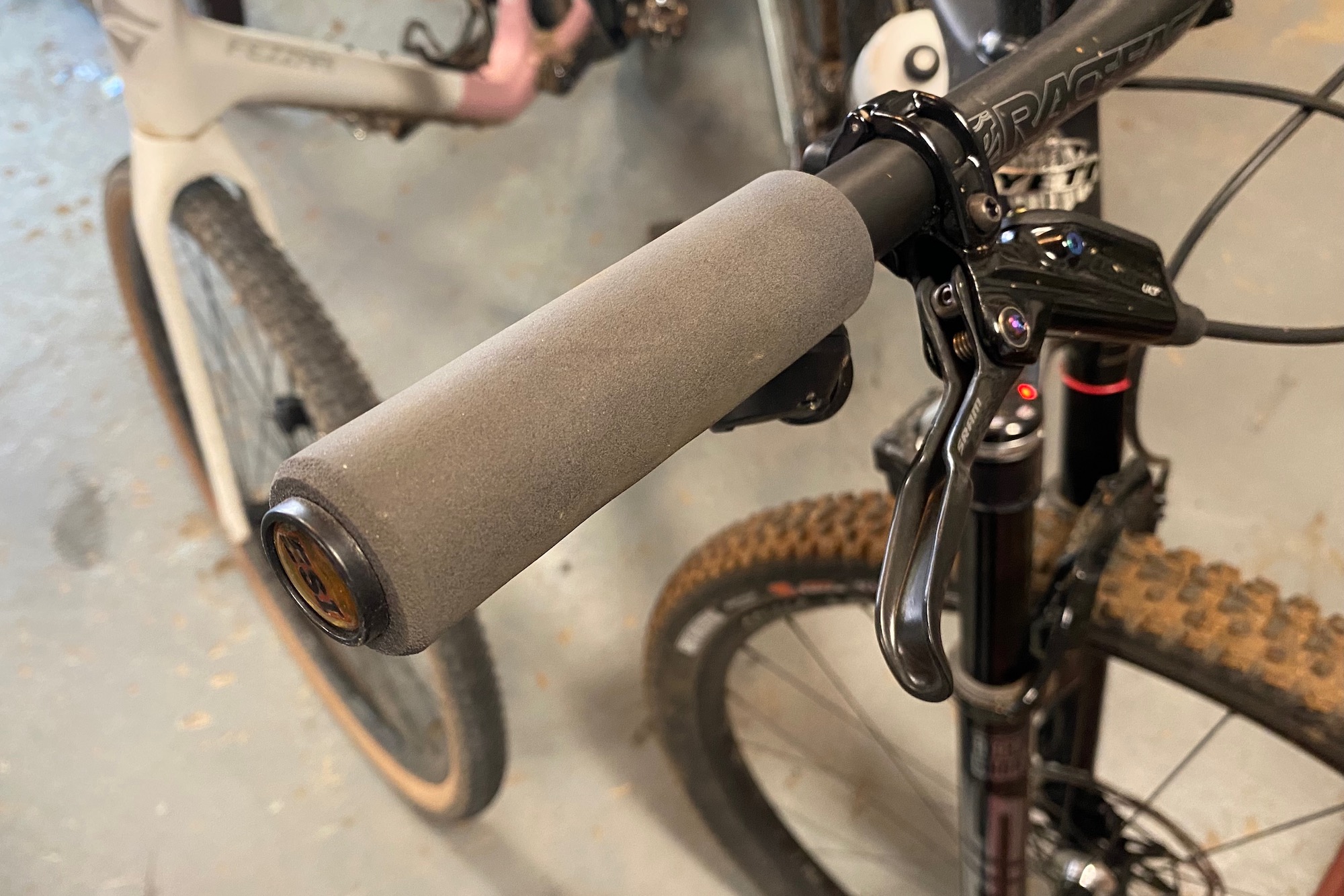
A slide-on grip is a simpler design with a rubber or silicone foam tube that slides over the handlebar. Because they lack an internal core and collars, they tend to be much lighter than lock-ons. That said, they are more difficult to install, sometimes requiring lubrication. They’re also more difficult, or impossible, to adjust and can move if improperly secured.
If your priority is security and ease of application, lock-on grips are the way to go. But if cutting weight and saving money are first and foremost, slide-on grips are the better option.
Shape & Length
Choosing the right shape and length can depend on the rider’s anatomy. Most grips are between 130 mm and 140 mm in length. But there are shorter 90mm options for riders with small hands and 150mm grips for riders with larger hands.
The most basic and common shape is the plain gauge grip, which has the same thickness throughout the length of the grip. Riders who downhill often or who simply prefer a better grip tend to go with this option, especially with the flange (a rubber disk near the inside of the grip) to help prevent the hand from sliding off.
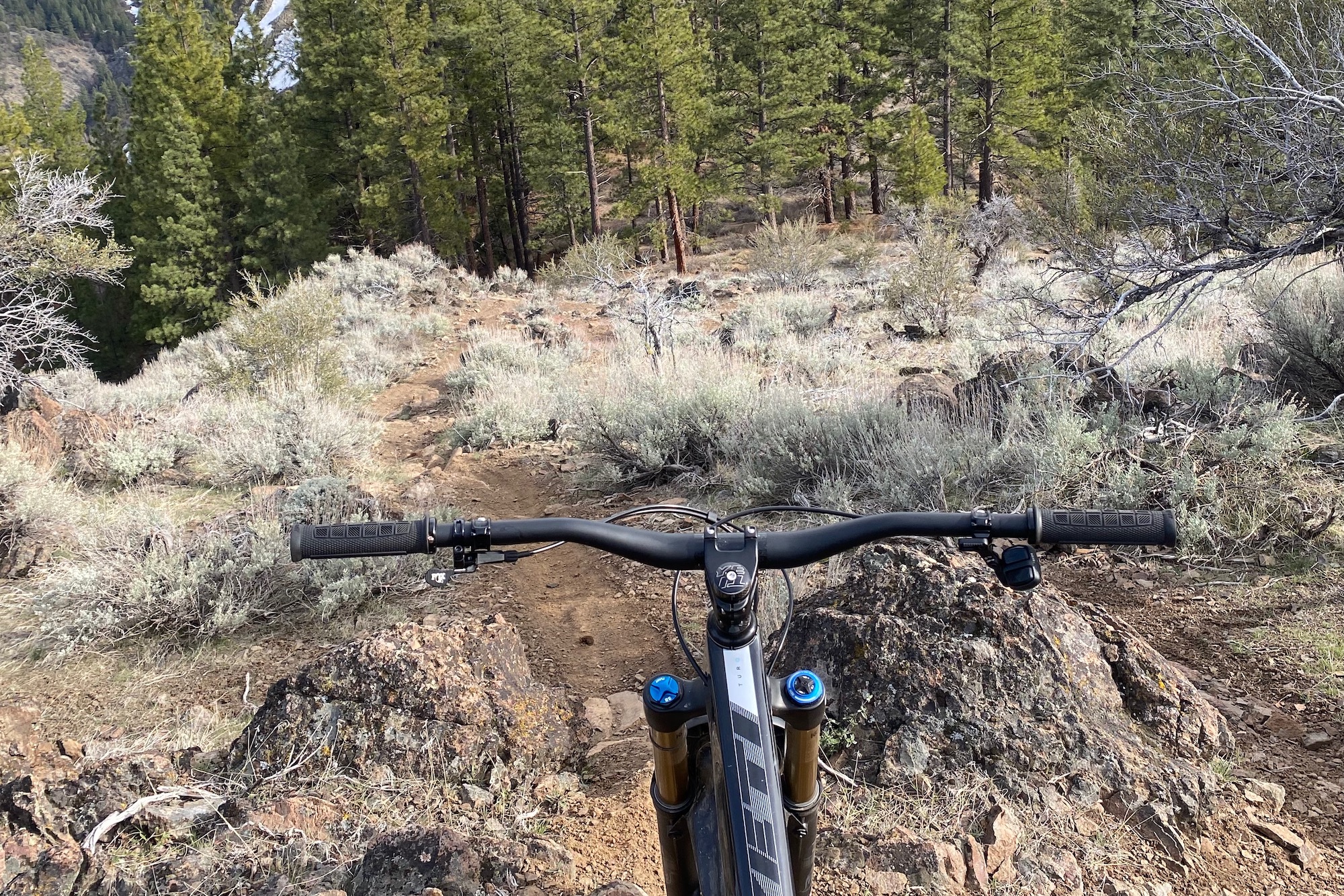
Ergonomic grips feature a variety of different shapes that aim to improve the alignment of your wrists and hands on the handlebar. These can include a flat section near the outside of the grip to add support for your hand or wrist, which can increase comfort and fight fatigue on longer rides. Other grips may be tapered or have variable thicknesses.
An extension of this is the integrated bar end — a short bar that points forward from the end of the grips — which allows riders a second outboard hand position.
Bar Plugs

Many grips are open on both ends, while some lock-on grips are closed on the outboard end. For those grips with open outboard ends, bar plugs or bar end caps are designed to fit into the end of the handlebar to protect the handlebars and grips.
Generally made of plastic or polymer (some alloy options are available), the end plugs typically just get pushed into the end of the handlebar. They serve the purpose of protecting the ends of the bar from scrapes with trailside obstacles, contact with the ground when setting the bike down or crashing, or from the handlebar impaling your body in a crash.
Materials
Most of the grips on the market are made from various rubber compounds. The types and amounts of rubber in the compounds vary between makes and models, but they are designed to provide a combination of grip, cushioning, and durability. Generally speaking, a harder plastic sleeve extends from the lock ring, which is then covered in the outer rubber layer.
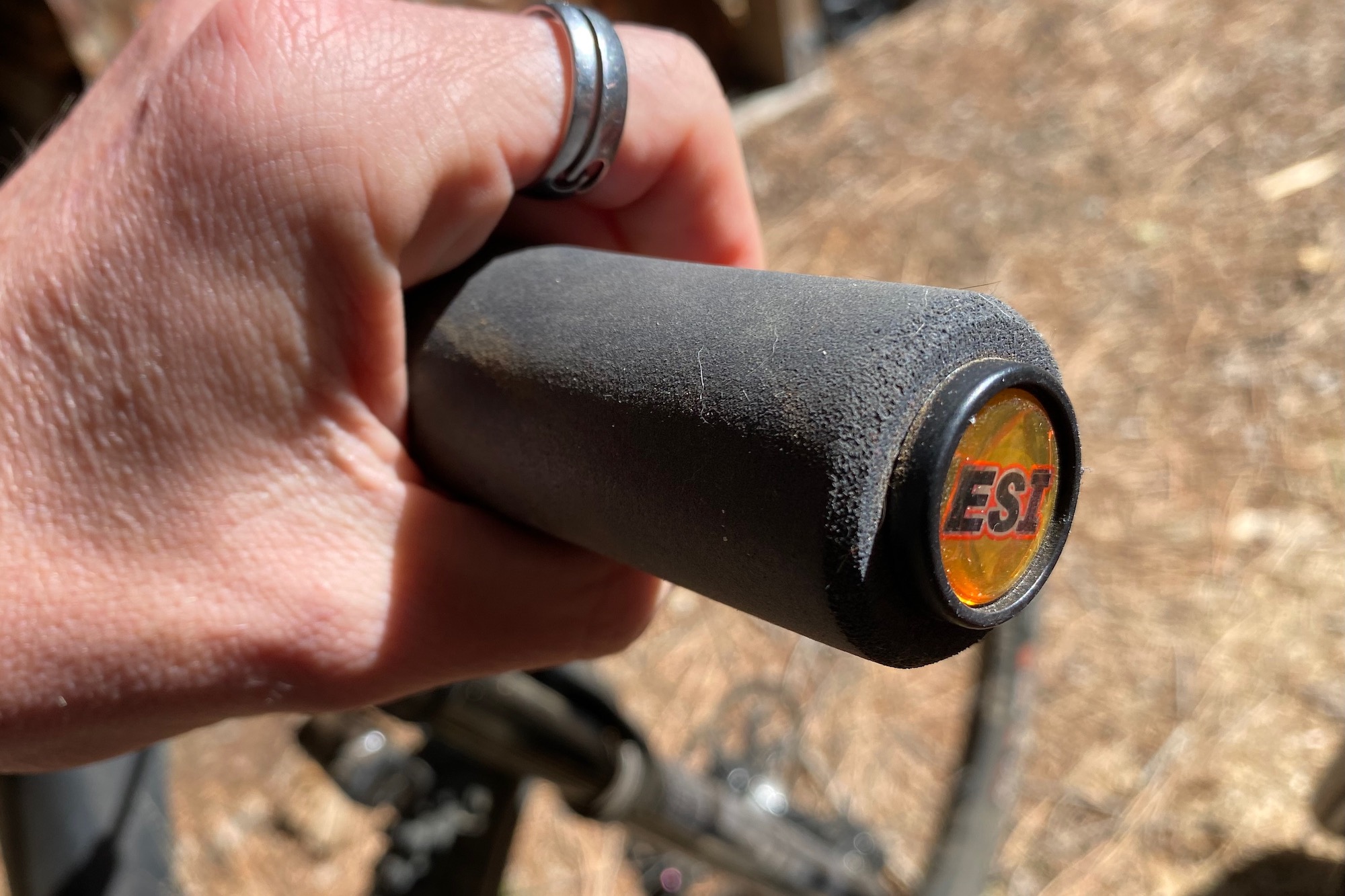
Silicone foam grips are popular for cross-country riding and touring, as they tend to be lighter weight and provide comfortable cushioning. Given the silicone material, most of these tend to be slide-on designs, which are less convenient to install and remove.
The silicone material is also more prone to damage in the event of a crash. There are some lock-on silicone grips on the market as well, which simplifies the installation and removal process.
Patterns
The texture and pattern of each design are unique. Some grips combine multiple textures in targeted areas around the grip to provide varying cushioning or grip characteristics and moisture management.
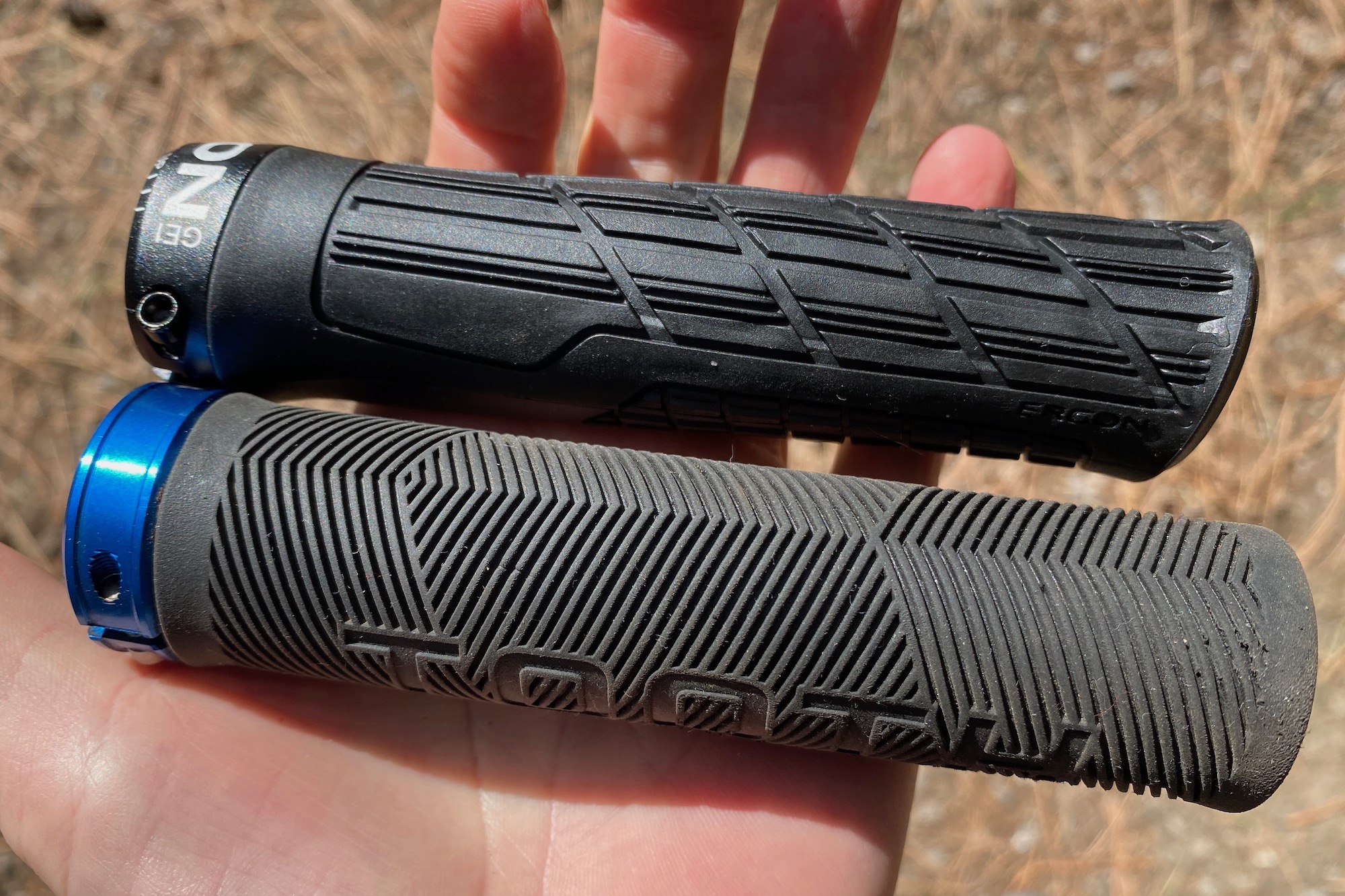
For instance, some grips blend chevron, rib, waffle, and other patterns. The chevron feels comfortable to some riders. The ribs, separated by narrow gaps, prevent side-to-side play. Waffle pockets are designed to prevent hotspots. Patterned and textured mountain bike grips often require mounting in a specific orientation to provide the desired cushioning and grip benefits.
On the other hand, other grips have the same pattern all the way across and around. And other designs are totally smooth, with no lines or divots at all. Ultimately, the best option is determined by each person’s personal grip/cushioning preferences, hand shape, and size.
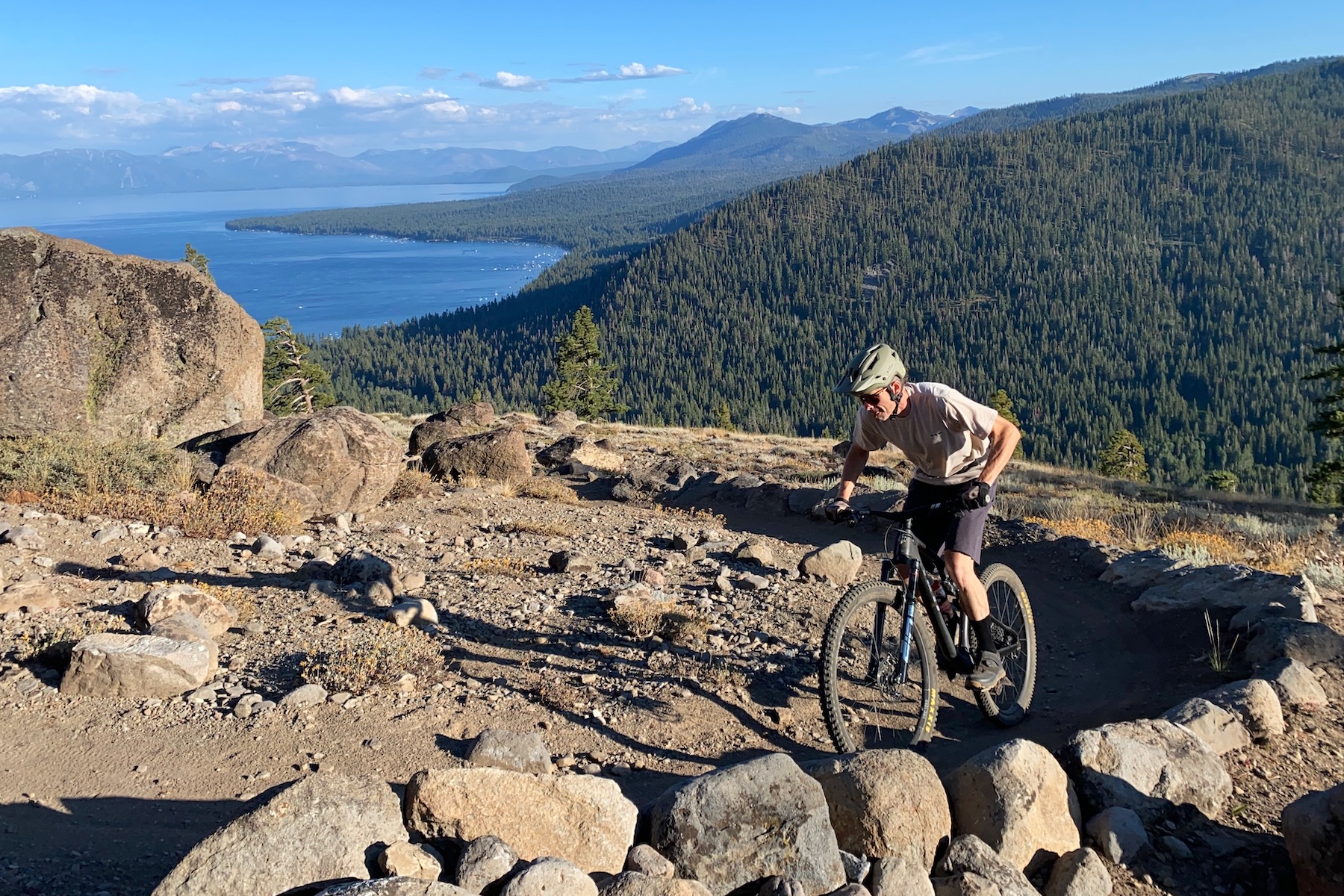
Diameter
Since our hands come in a range of shapes and sizes, mountain bike grips do, too. Choosing a diameter that fits your hands best can enhance your comfort and bike control. The grips we tested range in diameter from 29 mm up to 36 mm.
Riders with smaller hands will typically find better grip and comfort with smaller grips in the 29-30mm diameter range. Riders with especially large hands may gravitate towards thicker grips of 34mm+ in diameter or more. Most riders will fall in between those two extremes, which is why so many grips come in a 32mm diameter.
It’s not just hand size that dictates what diameter is right for you. Many people have preferences that will steer them one way or the other. Thankfully, you can usually wrap your hands around some grips at the bike shop to get a feel for the different sizes to see what will work best for you.
Cushioning
The amount of cushion in a grip design is as important as the pattern and also comes down to personal preference.
Slim, less-cushioned designs provide an athletic and very direct feel under the palms. Some riders prefer a more sensitive, aggressive touchpoint and responsiveness. This style of grip doesn’t provide as much damping for the hands. Instead, it prioritizes feedback and precise control.
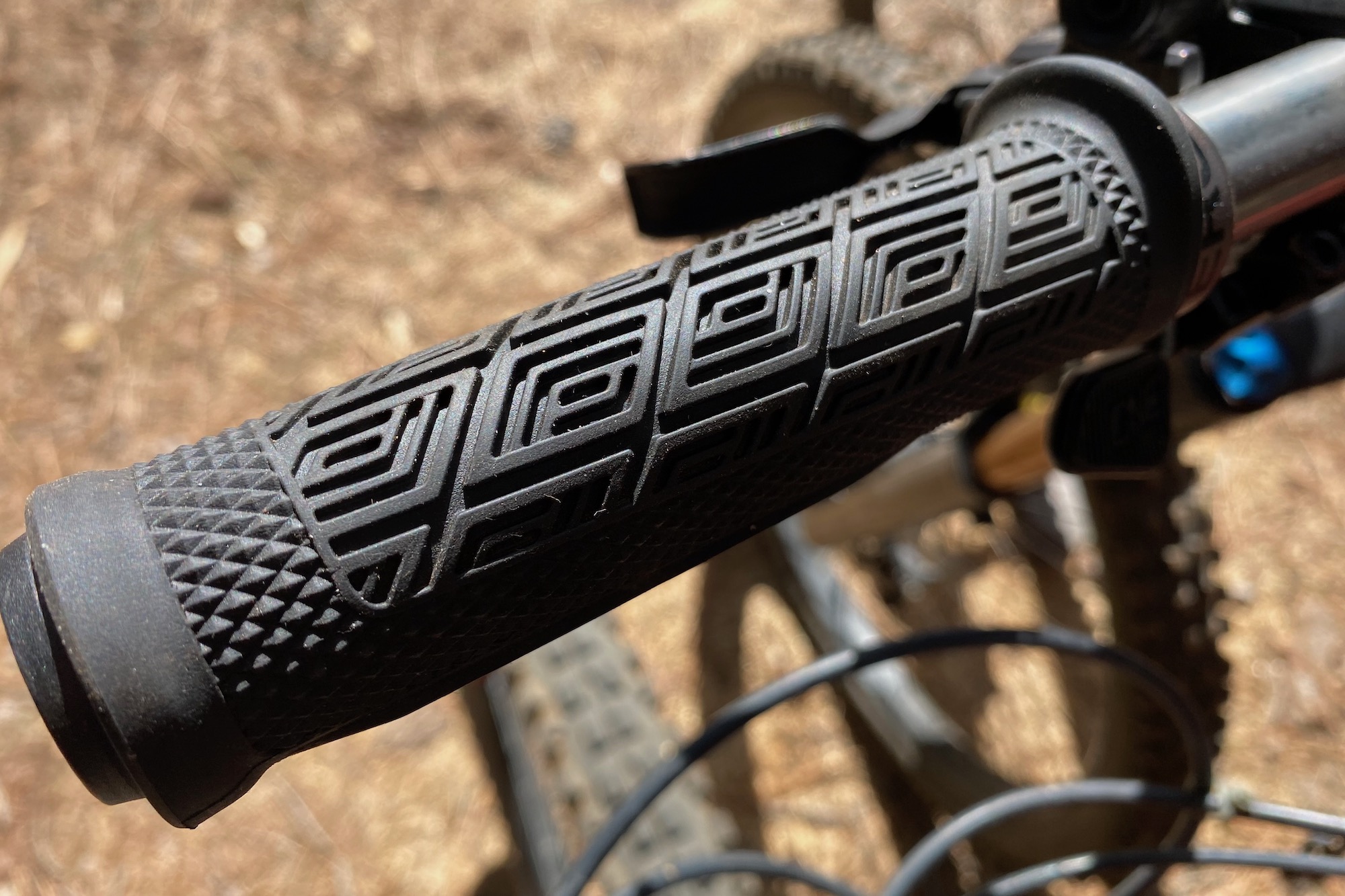
At the other end of the spectrum, thick and well-cushioned grips offer comfort. Pillowy, siped blocks and ribs can help prevent fatigue on long, tough rides or more enjoyment for less experienced riders. Cushioning can also help support some riders with hand or wrist ailments. Often, a super-cushioned grip sacrifices a touch of steering precision in trade for the comfort it provides.
Moderately cushioned grips are the sweet spot for most riders. These grips tend to balance the benefits of a little bit of cushioning with a direct and responsive bar feel. This is typically where we gravitate when choosing grips for all-around riding.
Price & Value
Mountain bike grips are comparatively much less expensive than most other things we attach to our bikes. Even the more expensive options we’ve tested are a cost-effective way to refresh your bike’s look and feel. The grips we tested range in price from simpler designs, which are close to $19, to high-end, ergonomic, and texturized options, which can be up to $40.
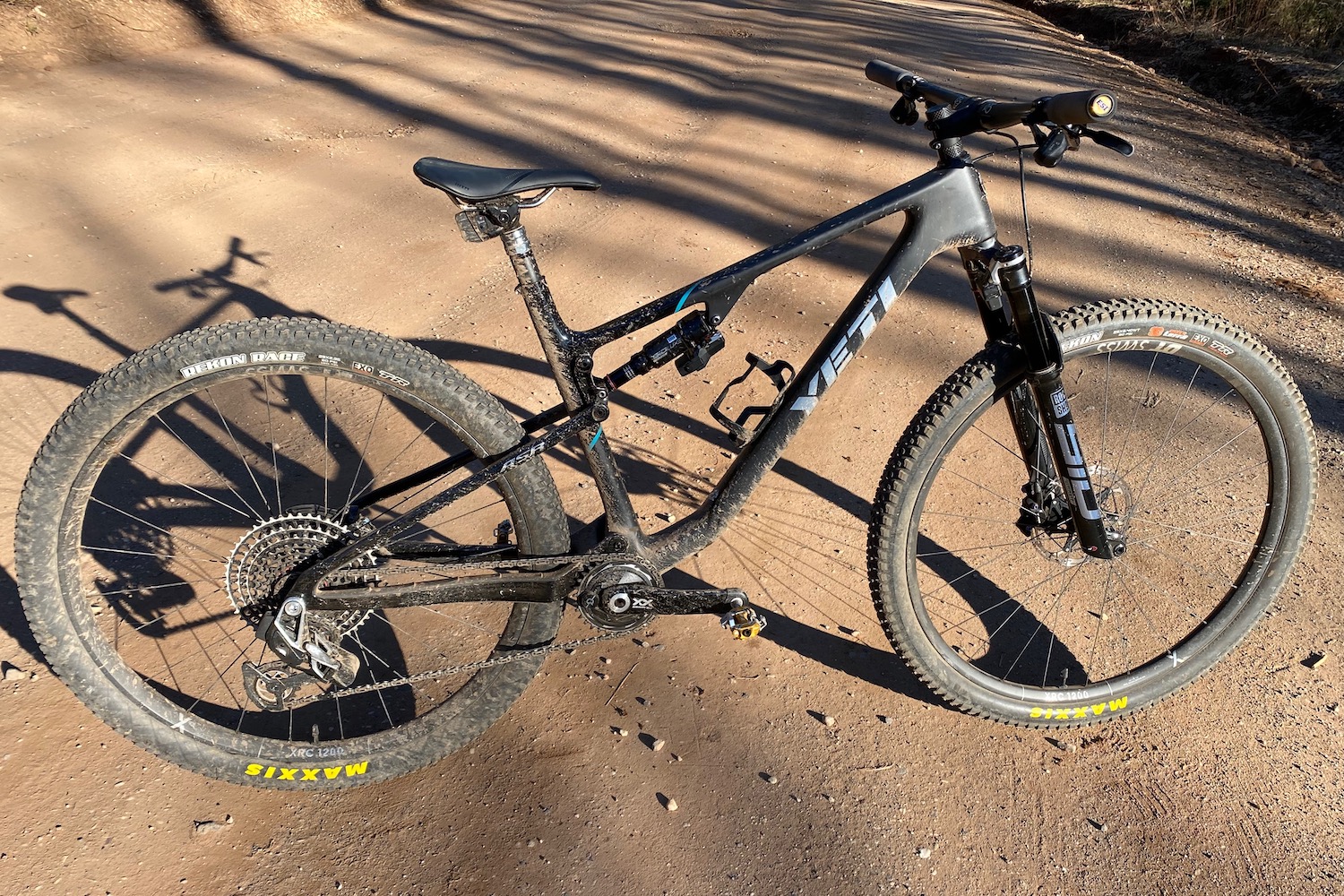
Budget
The least expensive grips are typically simple slide-on silicone foam tubes. With little complexity in the construction and no lock ring, these grips just cost less. They are a little more involved to install and remove, but they get the job done while also being the lightest options on the market.
The ESI Racer’s Edge ($19) and the ESI Chunky ($20) are two of the least expensive grips you can find and also some of the lightest. This price-to-weight ratio runs contrary to most other things in the bike world, where you typically spend more for things that weigh less. That said, slide-on grips aren’t for everyone.
Our budget lock-on pick, the PNW Components Loam ($29), will cost you a few bucks more, but it’s the least expensive lock-on model we tested. These grips look great, work well, and come in two diameters to suit different-sized hands. Realistically, you don’t need to spend more because these are awesome.
Mid-Tier
Climbing just slightly higher up the price ladder — only a few dollars — moderately priced lock-on grips will usually cost you around $30. The addition of a lock ring, an internal plastic sleeve, and an exterior rubber compound means that these grips cost a bit more for the materials and slightly more complex construction. Still, they aren’t exactly expensive, and most people should be able to find a grip that will serve them well without spending more.
Our favorite all-around grip is the ODI Elite-Pro ($30). This grip has been around for years, and we’ve been riding them for years because of the great balance of cushion, tactility, precision, and price. Similarly, the Wolf Tooth Echo Lock-On ($32) is another of our new favorites. Not only are these grips comfy, but the option to color-match your lock rings to other components on your bike is pretty neat.
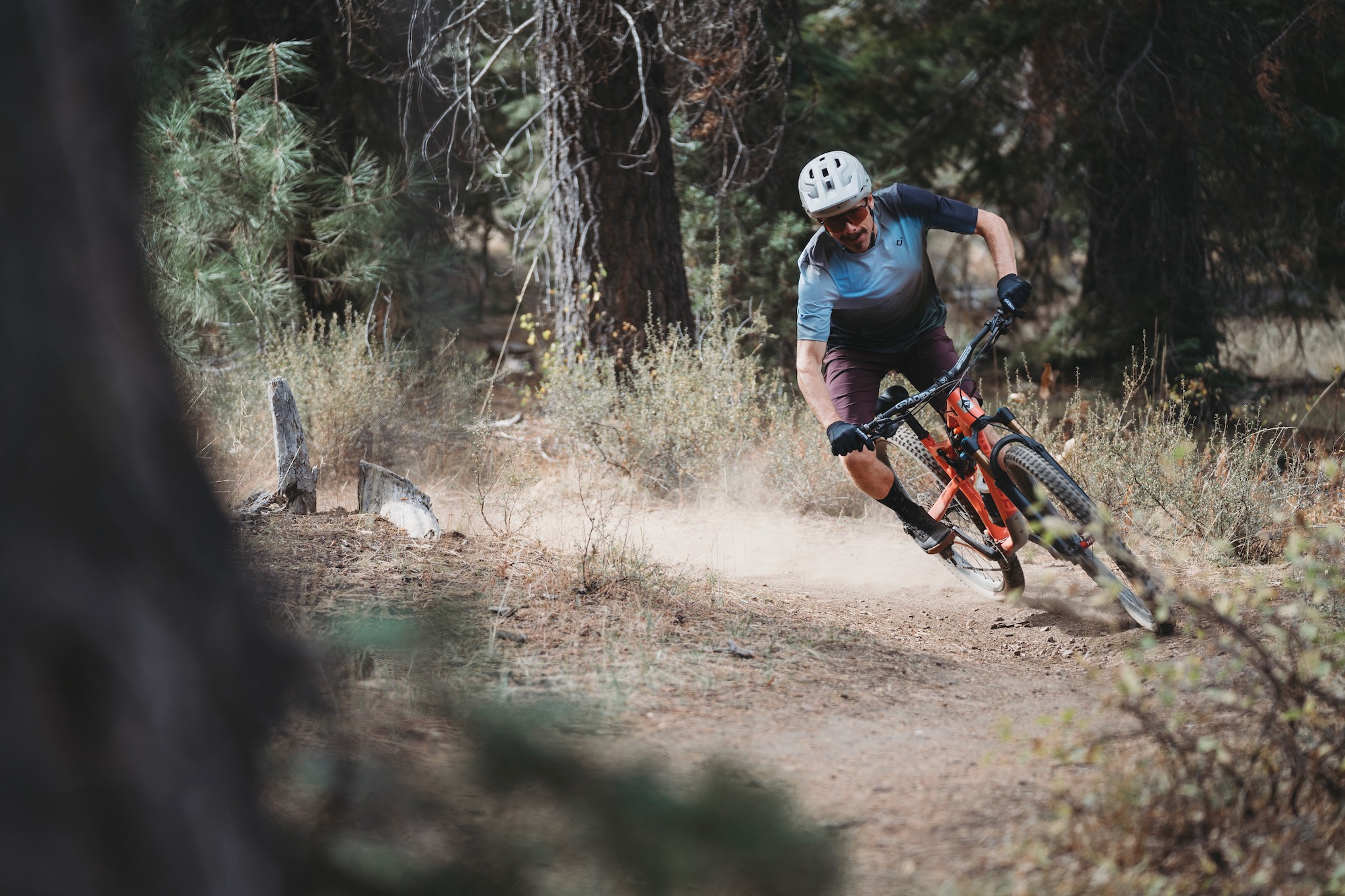
Premium
It almost feels silly to call grips in the $35-40 range premium, but they are a bit more expensive than other options. Most higher-end grips are lock-on, and typically, these include some ergonomic or more intricate design features.
The Ergon GDH Team ($40), for example, uses a tacky rubber compound and a more complex pattern to vary cushioning and grip characteristics. While they aren’t wildly different from other grips on the market, the balance of tactile grip and cushioning is certainly notable.
There are even more expensive grips on the market. Rev Grips ($60-90) is a unique offering that provides “suspension” by allowing the grips to rotate slightly with your hands, independent of the handlebar, with the goal of isolating them from shock and vibration.
This system requires a more complex design with dual lock rings, washers, and elastomers, so it isn’t too surprising that they cost more. We were surprised by how well they worked, so they could be worth the extra cost for riders suffering from discomfort or arm pump if they provide you with relief.
Frequently Asked Questions
That depends on the type of terrain you generally ride. If you tend to ride more technical terrain or prefer downhill, control is going to be at a premium, as you’ll be cranking on the handlebars to find the perfect line. Grips with a lock-on design are a great choice here, as they don’t tend to slip.
Also, look for grips with an aggressive tread pattern. They’ll keep your hands from slipping off and will drain away moisture and any debris that you kick up.
For longer rides, comfort is king, so look for a less aggressive tread and more padding. A softer, lighter slide-on grip is a good way to go, consider a silicone foam grip. An ergonomic grip or integrated bar ends will help take pressure off of your wrists and may be the best option for added support if you embark on super long rides often.
Selecting the best handlebar grips for your setup broadly depends on the type of terrain you ride, your riding style, and your hand health.
Firmer grips offer a more athletic, responsive connection to your bars and a more sensitive reading of the terrain beneath the tires. Softer material provides more cushion, absorption, and comfort, which can be preferred for longer rides, certain hand or wrist injuries, or just a personal preference.
Each grip also has a unique pattern that helps with dispersing moisture and debris, as well as stability and slip prevention. If you’re uncertain about a certain grip texture, stop by your local bike shop to get your hands wrapped around some of the available patterns.
Most grips are 130 mm to 140 mm long, but riders with large hands can find grips up to 150 mm. For smaller hands, there are grips as short as 90 mm.
As far as the diameter is concerned, a grip that you can’t fully wrap your hand around is too large, as you’ll pump your arms out trying to maintain a grip on it. But a grip that’s too small limits your contact with the grip.
As a general guideline, riders with smaller hands should opt for grips in the 29mm to 30mm range, while riders with larger hands should go with 32mm to 34mm grips.
Mountain biking grips can be shaped to give some riders an enhanced, more natural-feeling grip on the bars. Some find round grips to offer less than the needed level of support that they require. Often, ergonomic grips are the best choice for those with wrist, hand, or finger injuries. In other cases, adding a bit more hand support might be beneficial for those going for super long-distance rides.
Ergon is one of the main companies that produces ergonomic mountain bike grips. On our list, one of the best choices is the Ergon GA3. The flared rubber grip looks like a small wing beneath the palm, which is designed to provide wrist support and conform to the shape of the rider’s hands.
As far as fitting a bike goes, most grips are designed to and will fit a handlebar’s 22 mm diameter. Despite there being two clamp diameters for mountain bike handlebars —31.8 mm and 35 mm — the outer end of handlebars all taper to a standard 22 mm diameter.
Grips come in a wide range of shapes to accommodate all types of riders and mountain biking styles. It all depends on how deep into the weeds you want to get with your type of riding. Most plain-gauge grips will do well in any mountain biking situation. But if you want to cater your grips to how you ride and how comfortable you want to be, there are myriad options to choose from.
The longevity of grips depends on user care, riding style, terrain, crashes, how hard you grip, and the rubber compound of the grips in question. If you’re navigating technical or rocky terrain and occasionally rub against boulders and cliff faces, and if you drop your bike — or worse, take a tumble — that’ll definitely wear away at the grip material, especially on the ends.
If you’re a bikepacker, dropping or setting down the bike or leaning your bike upright against a fence post with that heavy load will cause stress on the materials over time. If you have a tendency to lay your bike flat on the ground, lean your bike at a sharp angle, or lay your bike in the back of a truck bed versus upright in a rack, that’ll also cause wear and tear to the grips.
The natural elements also break down the material over time, so rain, sweat, oils from your hands, and direct sunlight can decrease the product’s lifespan. Of course, the more miles you cover and the more aggressively you ride, the faster the grips will break down. Bear in mind that they are made of rubber, so the friction of your hands will cause the material to degrade over time. They are a “wear part,” after all.
But, grips are also one of the least expensive parts we use in mountain biking, so replacing them is quite affordable compared to other things. Still, you should expect to get a season or more from a set of grips.
Related Content
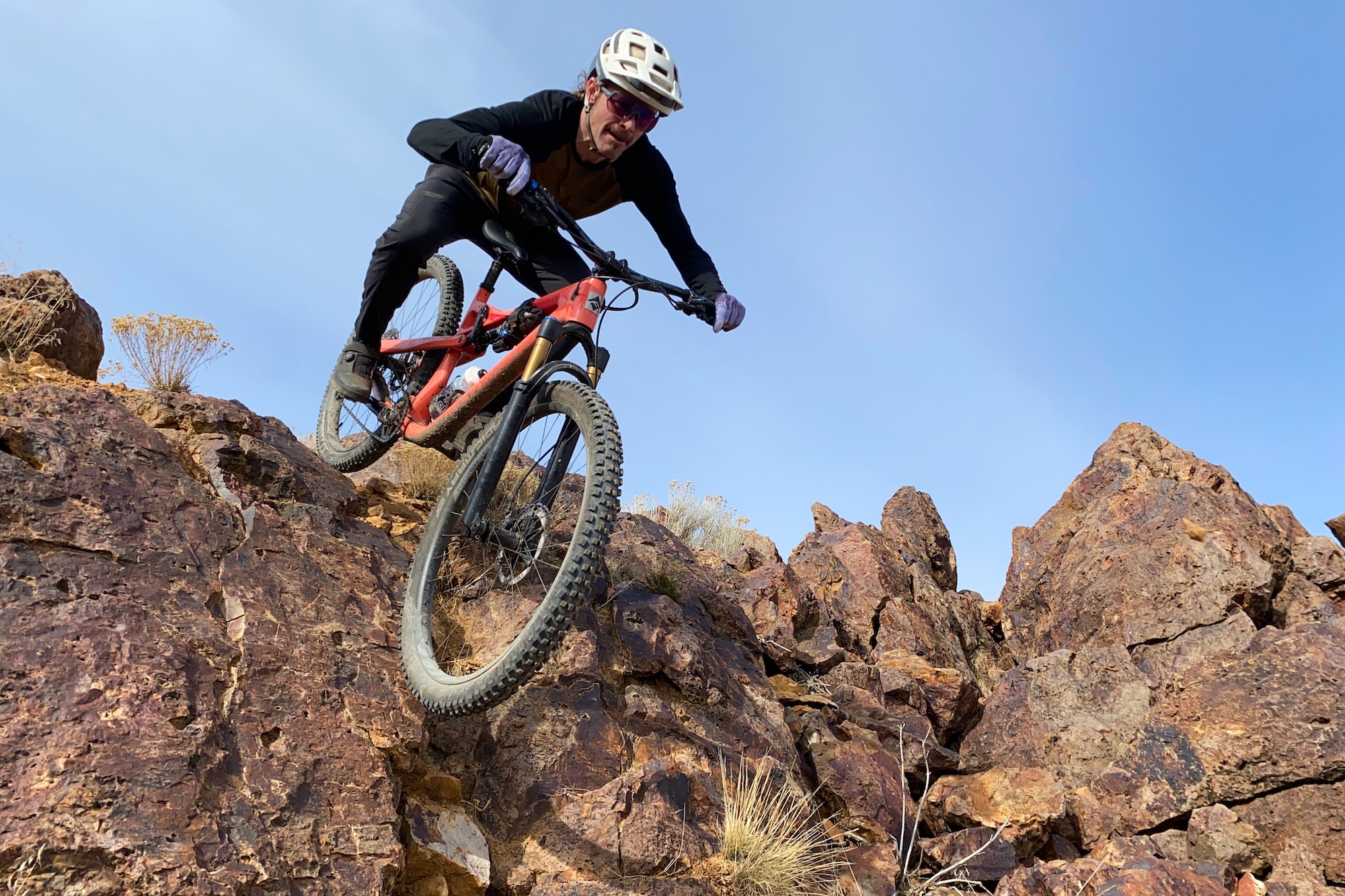
The Best Mountain Bike Helmets of 2025
We tested the top models from Giro, Specialized, POC, Smith, and more to help you find the best mountain bike helmet for your next ride.

The Best Mountain Bike Shoes of 2025
We tested 17 of the top mountain bike shoes from Crankbrothers, Specialized, Shimano, Five Ten, and more, to find the best shoes for every rider.

